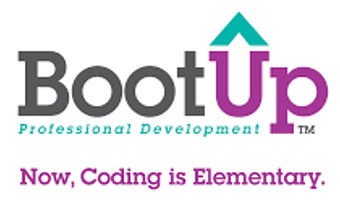Students will explore and practice the four key computational thinking skills and connect those skills to their future-ready toolbox.

Coding & Robotics
Discover coding and computer science through robotics and unplugged activities.
Coding C.H.O.M.P.
This lesson introduces students to coding while connecting cause–effect thinking with prior knowledge about healthy food choices.
Let’s Clean!
Students will use design thinking and computational thinking to complete the task of cleaning a room.
Fuzzy Friend Speaks: Empathy and Coding
Using a Fuzzy Friend, students will be introduced to algorithmic thinking and following sequential steps.
Sound Off
Learn to code both images and sounds to create a learning artifact students can wear!
The Server’s Tray
Learn to code with sounds that indicate the titling position of a wearable device.
Turn That Frown Upside Down
Learn how to write alternate code to yield the same results in your program and explore the value of being able to provide multiple solutions to a problem.
Rock, Paper, Scissors
Learn how to write code that creates different images based on Code Cube’s™ position.
Interactive Collage
Learn how to use a new type of block in Scratch and build on the skills learned in the Animate Your Name lesson.
Animate Your Name
Introduce students to simple algorithms using a small number of blocks in Scratch.
Changing Lights
Learn how to make the Code Cube™ display multiple images.
Turning on the Lights
Introduce students to Code Cube™ and learn how to code it to create an image.
Saving Sea Creatures: Light-up Fishing Nets
Learn about the problem of bycatch and prototype a solution using micro:bit.
Emotion Badge
Code a micro:bit simulator to create an emotion badge to share with the world how you are feeling behind your mask.
Minecraft Hour of Code: AI for Good
Use Artificial Intelligence to save a village in the Minecraft universe through this introduction to coding.




